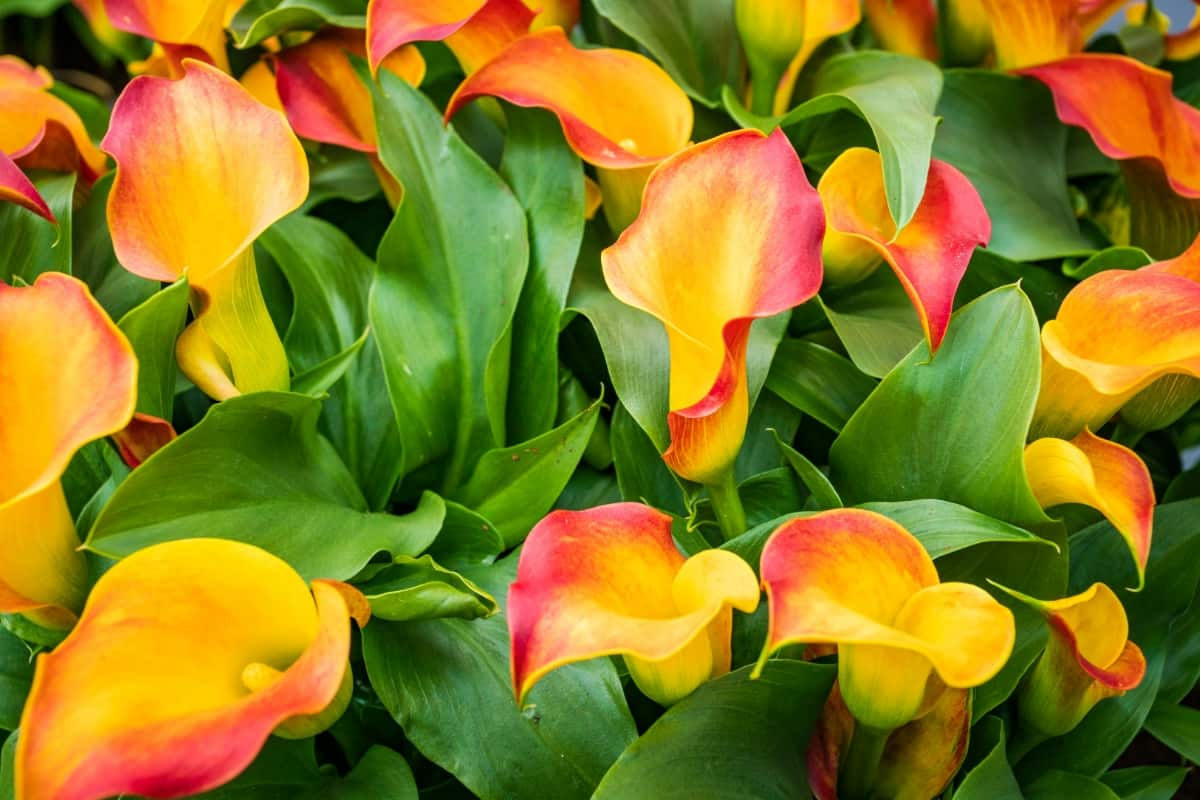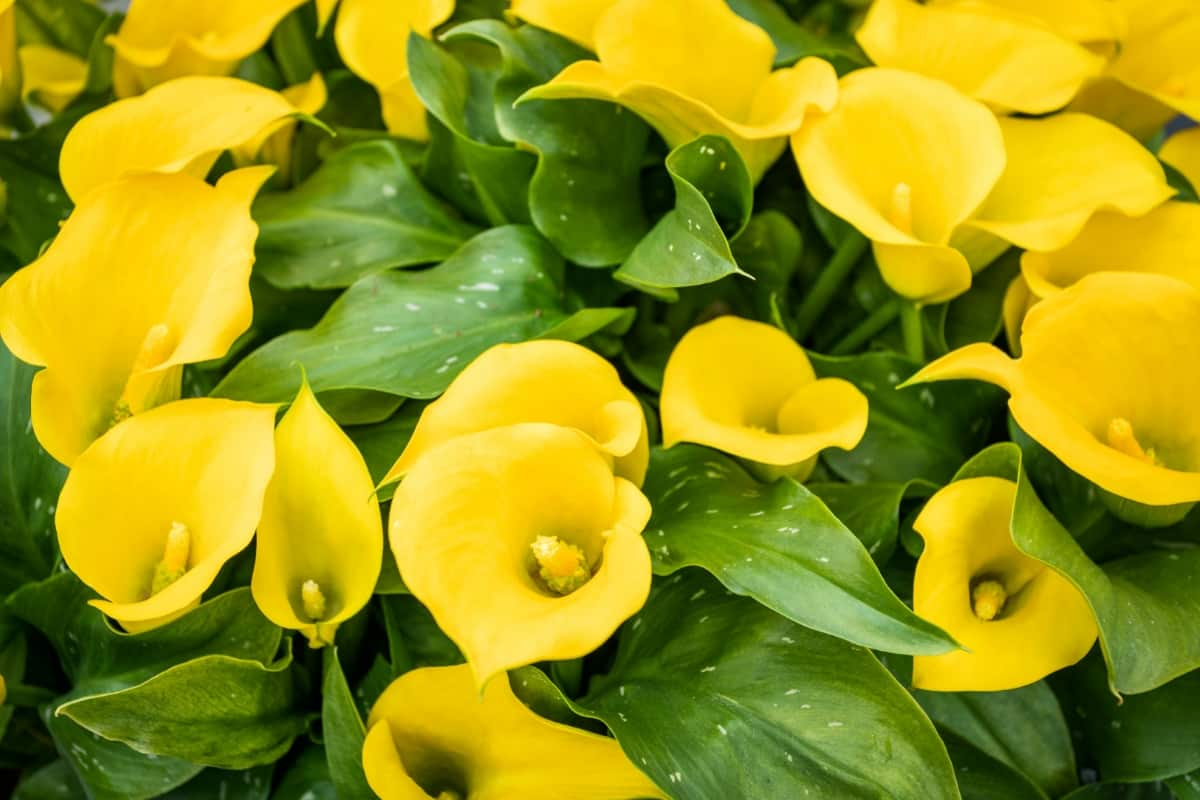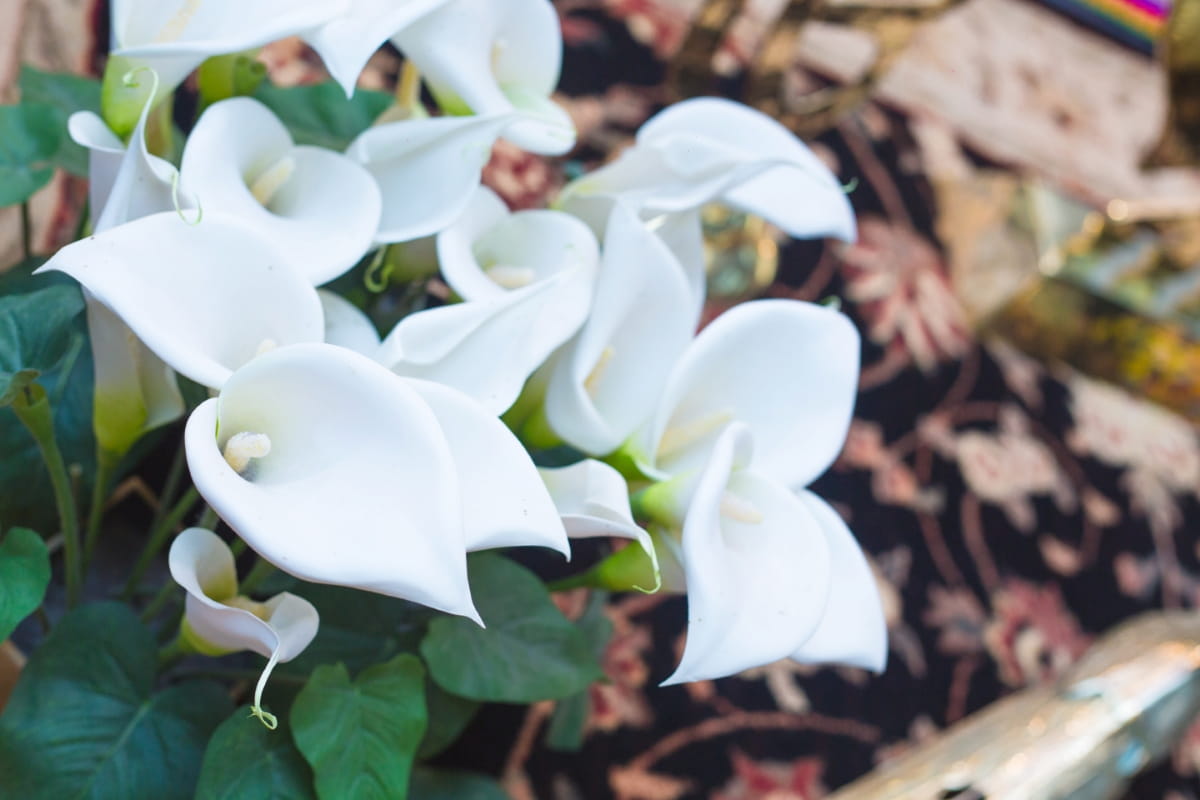Calla Lilies, renowned for their unique trumpet-shaped blossoms and striking hues, make an exquisite enhancement to both outdoor landscapes and interior spaces. Native to South Africa, these perennial plants are robust and relatively easy to grow indoors or outdoors. Here we learn a step-by-step guide to successfully planting, nurturing, and caring for Calla Lilies, ensuring their consistent growth and blooming.

How to Grow and Care for Calla Lily
Best Soil Conditions for Growing Calla Lilies Indoors
Indoor cultivation of Calla Lilies requires specific soil conditions for optimal growth. They thrive best in well-draining soil that is rich in organic matter. A pH level slightly acidic to neutral—between 6.0 and 7.0—is also beneficial. Incorporating peat moss or a blend of perlite and compost can help improve soil texture and drainage, maintaining the right moisture balance. When planting Calla Lilies indoors, a pot with drainage holes is vital to prevent water logging, which can cause bulb rot.
Step-By-Step Guide to Planting Calla Lily Bulbs in a Garden
Successful Calla Lilies planting in a garden begins with bulb selection and proper site preparation. Select robust, viable bulbs and sow them during the early spring season, following the final frost occurrence, when the soil temperature hovers between 60 and 65 degrees Fahrenheit. To plant, follow these steps:
- Select a garden spot that experiences partial to full sun exposure.
- Adequately prepare the planting area by cultivating the soil to a depth ranging between 12 and 15 inches. Incorporate a generous amount of compost or well-rotted manure to enhance soil fertility and drainage.
- Dig holes that are about 4 inches deep and 12 inches apart.
- Insert the bulb into the hole, ensuring that the growing point is oriented upward.
- Backfill the hole with soil, pressing firmly around the bulb.
- Ensure adequate watering immediately after planting to facilitate soil compaction around the bulb.
Watering Schedule for Healthy Calla Lily Plants
Calla Lilies prefer a consistent watering schedule. It’s best to moisten the soil, especially during the growing season. The watering schedule can differ based on climate and soil conditions, but a general guideline is to water once or twice weekly. Overwatering can cause bulb and root rot, so ensuring proper drainage is essential. In drier and hotter conditions, additional watering may be necessary.
Sunlight Requirements for Calla Lily Growth and Blooming
Calla Lilies require ample sunlight to bloom abundantly. They thrive best in locations with full sun to partial shade. In hot summers, morning sun and afternoon shade are ideal, while they can tolerate full sun in cooler regions. A bright, east, or west-facing window is optimal for indoor plants.
Fertilizer Recommendations for Vibrant Calla Lily Flowers
A balanced liquid fertilizer promotes vibrant Calla Lily flowers. A formula with equal parts nitrogen, phosphorous, and potassium (such as a 10-10-10 or 20-20-20) every two weeks during the growing season can yield excellent results. Remember to follow the manufacturer’s instructions for the correct dilution rate.
Preventing and Treating Common Pests on Calla Lilies
Calla Lilies are susceptible to several pests, including aphids, spiders, and bulb mites. Regular monitoring, good plant hygiene, and proper watering can significantly reduce these threats. Natural methods, such as introducing beneficial insects or using insecticidal soap or neem oil, are often effective. For severe infestations, chemical pesticides may be necessary.
In case you missed it: The Best Fertilizer for Lillies: When and How to Apply

Winter Care Tips for Calla Lilies in Cold Climates
Calla Lilies need special care to survive the winter in colder climates, where temperatures fall below freezing. In such cases, it’s best to dig up the bulbs after the first frost. Remove any surplus soil, allow sufficient time for drying, and subsequently place them in a cool, dry, and dimly lit environment during the winter season, preferably maintaining a temperature range of 50-55 degrees Fahrenheit. You can pack the bulbs in peat moss or sawdust to help prevent them from drying out. In spring, once the threat of the last frost has passed, you can replant them in your garden.
Pruning Techniques for Maintaining Calla Lily Plants
Pruning is vital for maintaining Calla Lily plants and encouraging them to bloom. It involves removing dead or dying flowers to redirect energy to healthier blooms. After the flowering period, allow the foliage to die back naturally. This process lets the plant photosynthesize and store enough energy for the next growing season. When the leaves have browned and withered, cut them off at the base.
Harvesting and Storing Calla Lily Seeds for Propagation
To propagate Calla Lilies from seeds, you first need to allow a few of your best blooms to mature and die back naturally on the plant. The seed pods should be harvested once they exhibit a yellow-brown hue. Trim the pods and let them dry in a warm, dry area for several days. After drying, crack open the pods to gather the seeds. Preserve the seeds in a cool, dry environment until you are prepared to sow them.
Troubleshooting Common Issues in Calla Lily Care and Solutions
- Yellowing Leaves: This may indicate excessive watering or inadequate drainage, resulting in saturated soil. The solution is to reduce watering frequency and ensure proper soil drainage. If the plant is in a container, check for adequate drainage holes.
- Wilting or Drooping: In addition to overwatering, under-watering could also lead to wilting. Ensure the plant receives a consistent water supply, especially during the growing season. Excessive heat can also cause wilting, so ensure the plant is not exposed to overly hot conditions.
- Failure to Bloom: If your Calla Lilies fail to bloom, it could be due to insufficient sunlight or nutrients. Ensure they receive plenty of sunlight and are fertilized regularly during the growing season.
- Brown Leaf Tips: This is often a sign of a humidity issue, particularly for indoor plants. Regular misting or placing the pot on a tray of pebbles filled with water can help increase humidity.
- Pest Infestation: Regularly inspect your plants for pests such as aphids and spider mites. Wash the plant with a mild soap solution in case of a minor infestation. For more serious infestations, consider using appropriate insecticides or introducing beneficial insects.
- Leaf Spots: These could indicate a fungal infection. Reduce watering and ensure the plant has good airflow. If the problem persists, consider using a fungicide.
In case you missed it: Application of Amino Acid Liquid Fertilizer: How to Use in Agriculture

Conclusion
Calla Lilies offer a unique blend of simplicity and elegance, adding an exquisite touch to any garden or home setting. They are rewarding plants that, with the right care and conditions, can provide vibrant colors and delight for years to come.
- Ultimate Guide to Ossabaw Island Hog: Breeding, Raising, Diet, and Care
- Ultimate Guide to Juliana Pig: Raising Facts, Size, Diet, Care, and Lifespan
- Raising Lleyn Sheep: Disadvantages, Price, Uses, Characteristics, and Care
- Ultimate Guide to Meishan Pig: Breed Facts, Breeding, Raising, and Care
- Ultimate Guide to Teacup Pigs: Raising, Diet, Lifespan, Cost, and Care
- Guide to Raising Poll Dorset Sheep: Facts, Profile, Characteristics, Uses, and Care
- Ultimate Guide to Bighorn Sheep: Characteristics, Diet, Lifespan, Breeding, and Lifecycle
- Ultimate Guide to Raising Katahdin Sheep: Farming Facts, Breed Profile, Uses, and Care
- Ultimate Guide to Raising Oreo Cows: Belted Galloways Farming Facts, Profile, Uses, and Care